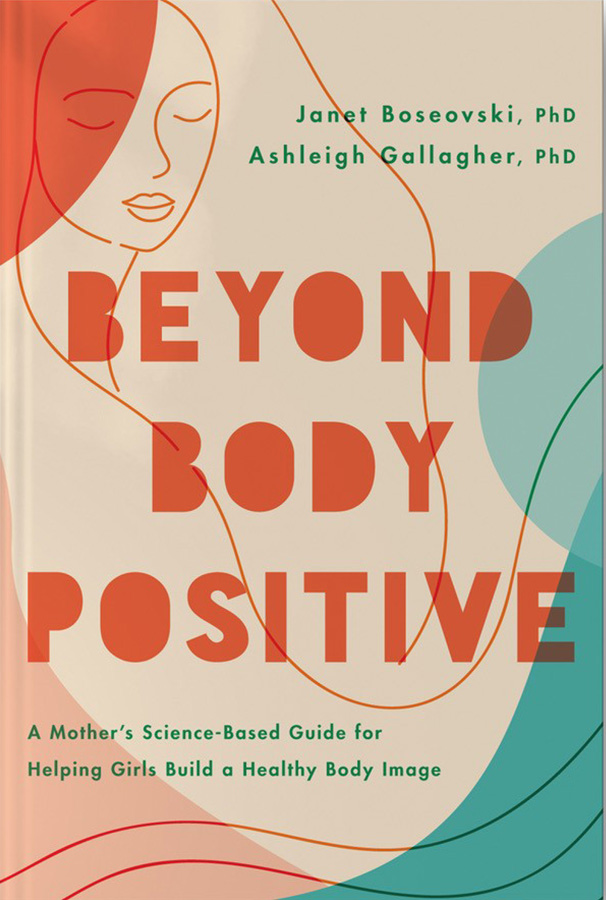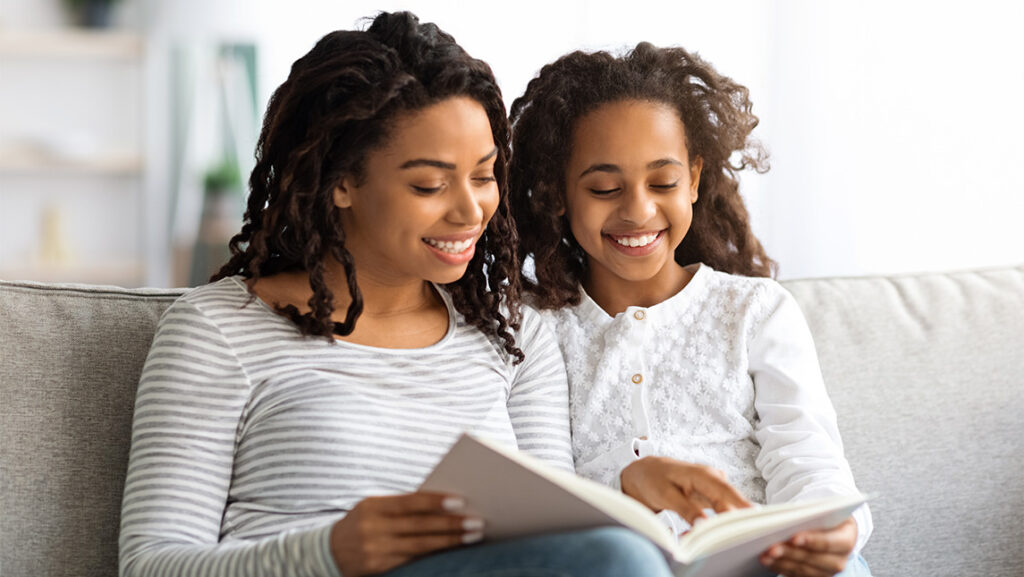Growing up, girls’ lives are full of friends, memes, social media trends, and influencers all telling her the “right” way to think of her looks, her body, and her health. It may leave Mom feeling like she can’t get a word in edgewise.
Two UNC Greensboro faculty say mothers should not feel that way. “Moms are the biggest influencers on their daughters’ body image development,” says Dr. Janet Boseovski, UNCG Department Head of Psychology.
Empowering mothers to protect their children’s health and self-concept drove Boseovski and her longtime colleague, Dr. Ashleigh Gallagher, to author a new book, “Beyond Body Positive: A Mother’s Science-Based Guide for Helping Girls Build a Healthy Body Image.”
It is available now on Kindle with the hard cover going on sale on December 3. (But anyone interested in a free print copy can enter to win one on Goodreads through November 14.)
Making Sense of Science
There are already lots of books, articles, and blogs claiming to know how to give girls a healthy body image, but Boseovski and Gallagher noted how most of them are only written for the daughter or for the mother, not for both. Furthermore, these books often glossed over the importance of the mother-daughter relationship.



Their book, which is part of the American Psychological Association LifeTools Series, is written so that a mother and daughter take away something from the text.
It hits on a lot of points that might sound familiar to moms: a balanced diet, skepticism of media depictions, body positivity, and navigating peer groups, but they emphasize a science-backed approach. “Some of the advice out there is wrong,” says Gallagher. “We’re adding a lot just by telling moms what the science says, which may not otherwise be easily or readily accessible to them.”
To make sure they understood the genuine concerns of mothers, Boseovski and Gallagher held focus groups, inviting women to come to the UNCG campus and talk about the concerns they have for their girls. “We worked really hard to make this a book for moms, not academics,” says Boseovski. “It is readable and friendly with concrete tips they can use.”
Boseovski’s research has centered on social and cognitive development from early to late childhood, while Gallagher is a social psychologist with expertise in group processes in social comparison and in culture. Their backgrounds made them the perfect co-authors on a book that appeals to all ages.


Never Too Old, Never Too Young to Learn
The book does not talk down to the daughter. In fact, the first chapters ask the mother to re-evaluate her own body image. “We laid out some of the things a mom can be on the lookout for, like perfectionism and neuroticism,” Gallagher explains. “The social psychology angle brings in the driving forces of a negative body image, such as social comparison processes and objectification theory. Moms can understand how those processes work, and how they may vary from woman to woman.”
The second half of the book draws on Boseovski’s expertise to explain how girls develop their body image. They say mothers can start talking to girls as young as three years old, a much younger age than most body image books suggest.
“Most books focus on teenagers or a pre-teen. That is too late,” says Boseovski. “This book is based on rigorous science. We know we need to start early in terms of thinking about yourself as a whole person and not fall into diet culture and appearance.”
They included lists of activities, including games and recipes categorized by age, so that mothers can instill a healthy perspective for their daughters as they grow up. “This can be built into your everyday life,” says Boseovski. “Moms can find those small opportunities.”


Student Contributions
Boseovski and Gallagher credit the conversations they had with UNCG students with shaping the book, as many of the points they make were inspired by a reading group organized by Kestyn Harris ’20, who earned her bachelor of arts in psychology at UNCG.
The contributions of one graduate student, Julianne Peebles ’23, earned her a credit in the book. Peebles’ master’s thesis is about the body image development of pre-professional dancers, whom Boseovski says is a particularly vulnerable group. She contributed to the book’s codices.
“It was great for us to have that voice of a student from a different generation to assist us and give us feedback. And it’s a training opportunity for her,” says Boseovski.
Both researchers hope their research will cut through the noise and set moms and daughters on the right track when it comes to talking about body image. “An important point from the book is to start building early, so that you don’t have to do the reparative work later,” says Gallagher.
Story by Janet Imrick, University Communications
Photography by AdobeStock
Additional photography courtesy of the College of Arts & Sciences








